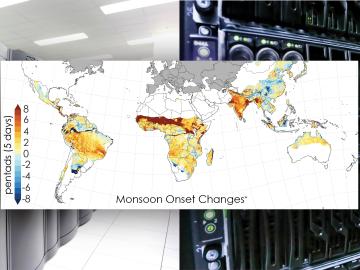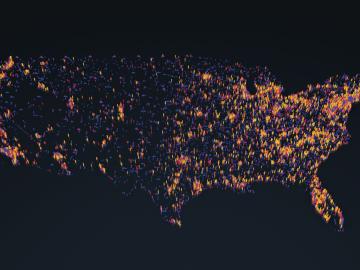
Filter News
Area of Research
- (-) Neutron Science (27)
- (-) Nuclear Systems Modeling, Simulation and Validation (2)
- (-) Supercomputing (105)
- Advanced Manufacturing (3)
- Biology and Environment (120)
- Biology and Soft Matter (1)
- Computational Biology (1)
- Computational Engineering (2)
- Computer Science (7)
- Electricity and Smart Grid (1)
- Energy Science (96)
- Fuel Cycle Science and Technology (1)
- Functional Materials for Energy (1)
- Fusion and Fission (46)
- Fusion Energy (18)
- Isotope Development and Production (1)
- Isotopes (5)
- Materials (61)
- Materials for Computing (5)
- Mathematics (1)
- National Security (31)
- Nuclear Science and Technology (39)
- Sensors and Controls (1)
News Topics
- (-) Advanced Reactors (3)
- (-) Artificial Intelligence (40)
- (-) Coronavirus (19)
- (-) Critical Materials (3)
- (-) Environment (29)
- (-) Frontier (33)
- (-) Fusion (2)
- (-) Nuclear Energy (8)
- (-) Security (7)
- 3-D Printing/Advanced Manufacturing (10)
- Big Data (23)
- Bioenergy (14)
- Biology (16)
- Biomedical (28)
- Biotechnology (2)
- Buildings (4)
- Chemical Sciences (7)
- Clean Water (2)
- Composites (1)
- Computer Science (99)
- Cybersecurity (9)
- Energy Storage (14)
- Exascale Computing (26)
- Fossil Energy (1)
- Grid (5)
- High-Performance Computing (44)
- Hydropower (1)
- Isotopes (2)
- Machine Learning (17)
- Materials (28)
- Materials Science (33)
- Mathematics (2)
- Microscopy (8)
- Molten Salt (1)
- Nanotechnology (19)
- National Security (8)
- Neutron Science (122)
- Partnerships (1)
- Physics (17)
- Polymers (3)
- Quantum Computing (20)
- Quantum Science (30)
- Simulation (16)
- Software (1)
- Space Exploration (5)
- Summit (43)
- Transportation (10)
Media Contacts

Scientists from the Department of Energy’s Oak Ridge National Laboratory and a dozen other international research institutions have produced the most elaborate set of projections to date that illustrates possible futures for major monsoon regions.

A team of researchers has performed the first room-temperature X-ray measurements on the SARS-CoV-2 main protease — the enzyme that enables the virus to reproduce.

The Department of Energy’s Office of Science has selected three Oak Ridge National Laboratory scientists for Early Career Research Program awards.

COVID-19 has upended nearly every aspect of our daily lives and forced us all to rethink how we can continue our work in a more physically isolated world.

Does vaping and smoking e-cigarettes put you at higher risk of COVID-19 complications? UWindsor’s Drew Marquardt is trying to answer that question with research into how the toxicants in the oils of vapes and e-cigarettes affect lung function.

Research by an international team led by Duke University and the Department of Energy’s Oak Ridge National Laboratory scientists could speed the way to safer rechargeable batteries for consumer electronics such as laptops and cellphones.

Scientists have tapped the immense power of the Summit supercomputer at Oak Ridge National Laboratory to comb through millions of medical journal articles to identify potential vaccines, drugs and effective measures that could suppress or stop the

With Tennessee schools online for the rest of the school year, researchers at ORNL are making remote learning more engaging by “Zooming” into virtual classrooms to tell students about their science and their work at a national laboratory.

OAK RIDGE, Tenn., May 5, 2020 — By 2050, the United States will likely be exposed to a larger number of extreme climate events, including more frequent heat waves, longer droughts and more intense floods, which can lead to greater risks for human health, ecosystem stability and regional economies.

In the race to identify solutions to the COVID-19 pandemic, researchers at the Department of Energy’s Oak Ridge National Laboratory are joining the fight by applying expertise in computational science, advanced manufacturing, data science and neutron science.


